How to grow geraniums from seeds at home?

Pelargonium belongs to the geranium family, but is a separate genus, like geraniums. Gardeners consider them synonymous. "Geranium" is a more familiar name for a flower, so it, like "pelargonium", will be used in the text. Currently, there are about 410 varieties of pelargonium. This plant does not require much effort to maintain. Nature has endowed it not only with beauty, which helps to create a cozy atmosphere in the room, but also with many useful properties. These properties have antibacterial, wound healing, calming effects that have a great impact on people's daily life. Essential substances, which are distributed by the flower, saturate the air with a pleasant scent.
To prevent mistakes when growing geraniums, it is required to use seeds that are of high quality and in demand. You need to buy them only at proven points of sale, since if the seeds are stored improperly, their ability to germinate may be destroyed, as a result, the purchase will not be enjoyable.
Sowing dates
You can start growing this variety at any time, since geranium feels great both at home and on the street. It is best to start sowing in February, so that by the summer you will have flowering plants. Reproduction of pelargonium is carried out by cuttings, regardless of the season. However, it is best done in the spring. The stalk is cut along with 3-4 leaves (preferably cut from the top) and placed in water. Then you need to wait until the roots grow in length. Then you need to dry the cutting and plant it in the ground.
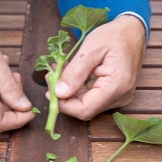
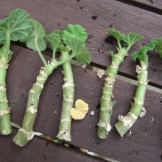
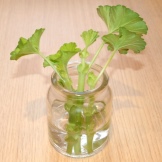
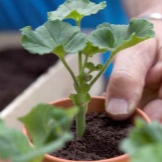
The choice of planting material
Before the planting process, you must select the planting material itself. It can serve the following varieties and types of pelargonium.
- "Early wagon". Flowers reach 3-4 cm in diameter. They bloom early and continue to bloom until frost begins. It is a perennial, but in the open field - an annual.
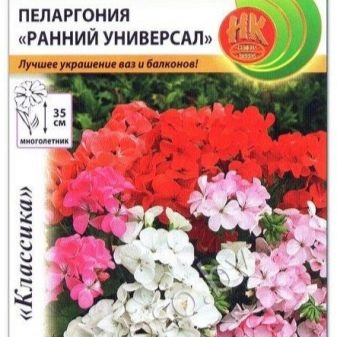
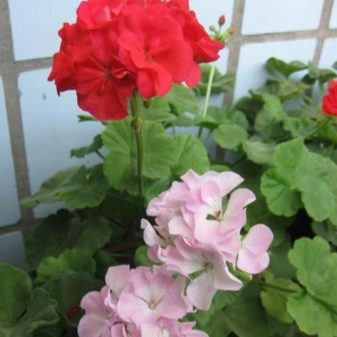
- Terry pelargonium come with both large and small flowers of various shades. Terry pelargonium, reminiscent of roses, is the most popular plant that can be easily cultivated at home. There are such varieties as “Purple "," White "," Angel ", which are distinguished by their yield.
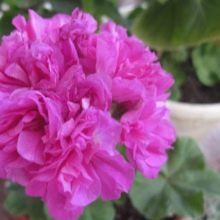
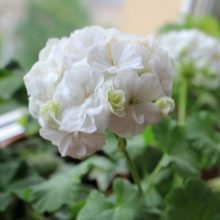
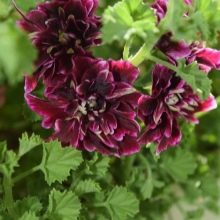
- "Colorama F2" is an indoor garden plant. The height of this fruitful variety reaches 30-35 cm. Flowering also continues until frost. There are red, pink, salmon, white flowers.
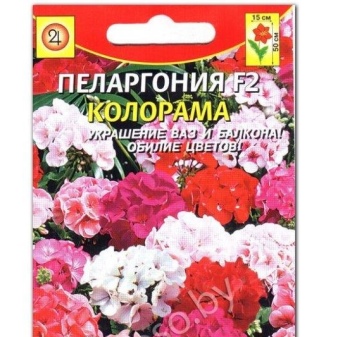
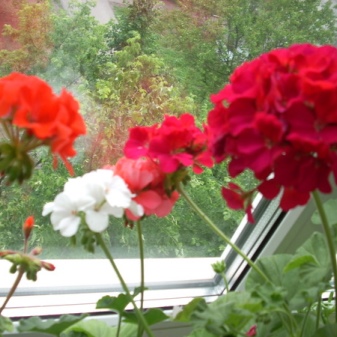
- Capri is a houseplant. With proper care, it will look good and bloom all year round. This is a voluminous bush with a height of 20 cm, which easily tolerates a lack of moisture.
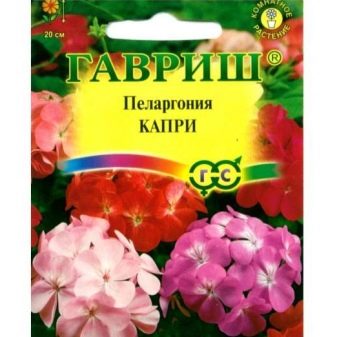
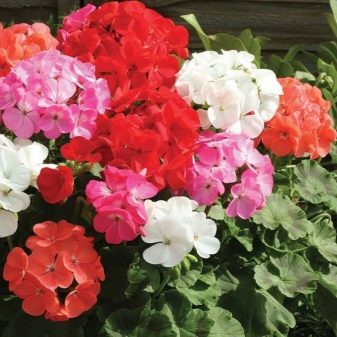
Pelargonium has the following beneficial properties.
- Air purification. The room in which it is located contains a minimum amount of germs. Also, flies and mosquitoes are practically not found.
- Relieve stress. The fragrant smell of pelargonium relieves stress well, promotes sound sleep, and also helps to get rid of depression.
- Scare away pests. Other flowers and plants will be saved from pests thanks to geraniums.
- Treatment of diseases. Pelargonium has found its widespread use in folk medicine. Its beneficial properties are often compared to those of plantain.Fresh geranium leaves can help with wounds, as it does an excellent job of treating abscesses and tightening cuts, and, for example, decoctions on this plant help in the presence of diseases of the stomach and intestines. To normalize blood pressure, you need to attach a leaf of the plant to the wrist, and to eliminate toothache, to the tooth. For colds, a decoction of geranium leaves is made, which is used to gargle. Also, such a decoction is used for hair loss. The juice is used for a cold, as well as in the treatment of cataracts in the early stages.
- Obtaining essential oil. Geranium essential oil is obtained with a delicate aroma. It has found its use for medicinal purposes. The oil can be used to treat ear and back pain, to treat a cold and to relieve muscle fatigue. It also works well on the skin and is used to treat rashes and eczema.
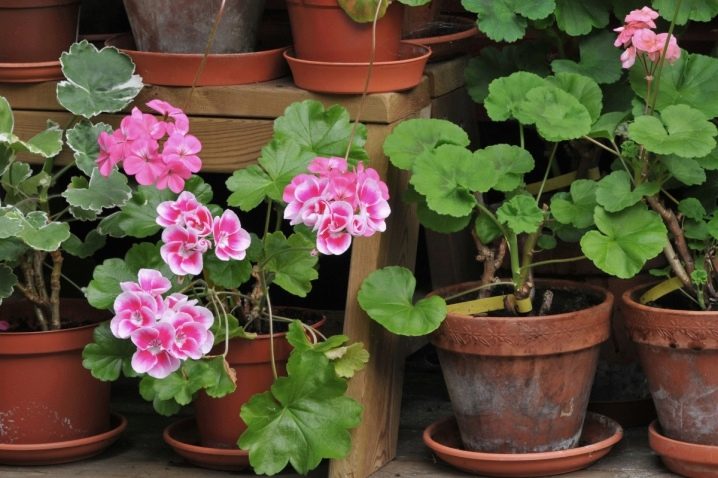
Soil and seed preparation
Despite the fact that the plant is unpretentious in care, special attention should be paid to planting it. Before sowing geraniums, you need to prepare, stock or purchase the following:
- peat tablets (need to be soaked in water);
- seeds;
- water;
- a container for water (to soak the tablets);
- container for peat tablets;
- potassium permanganate (potassium permanganate);
- pot;
- plastic bag.
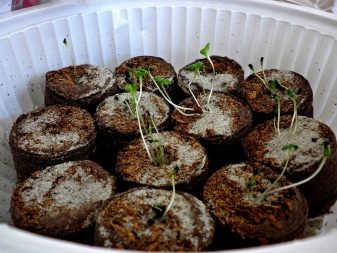
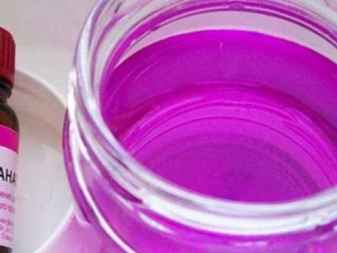
In the hypostasis of the soil, you can take a specialized mixture for geraniums or make it yourself. To do this, you can mix peat and perlite in a 1: 1 ratio or peat, turf and sand in a 1: 2: 1 ratio.
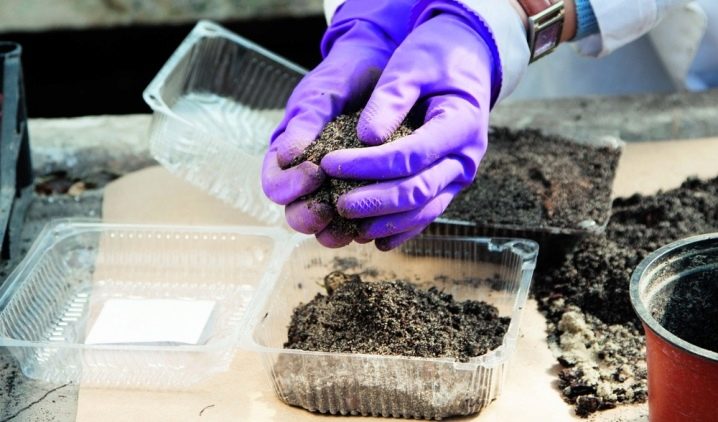
Landing
For one tablet, you need to take 200 ml of water. Dilute potassium permanganate (potassium permanganate) in potassium water until the water becomes light pink. This is to prevent the peat tablet from becoming moldy. Next, you need to soak the tablet in water until it gets wet. After that, we take the container for the tablet and place it in a plastic bag, then we take out the swollen peat tablet and place it in the container. This method is good because everything you need can be easily purchased and planted at home. We make a hole in the tablet about 3-4 mm, if it is not provided, and put the geranium seed into it, lightly sprinkling it.
It must be borne in mind that the plant is very fond of light and warm places. We close the plastic bag, place the pot in a bright place that prevents direct sunlight.
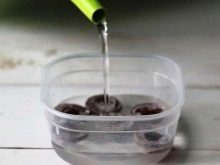
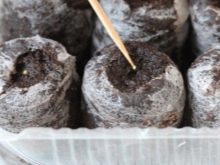
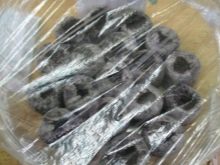
Further care
In the process of seed growth, you need to ensure that the soil is always moist, and the temperature fluctuates from 21 to 23 ° C. For airing, open the bag for 6 minutes once a day.
Seeds germinate from 6 to 13 days or more. The sprouts do not break through at the same time, so if you germinate several seeds, you need to release those that have already sprouted from the bag. It is necessary to put the sprout in a warm and bright place, which will prevent direct sunlight from entering, since they can only burn the newly appeared plant, which will lead to its death in the future. It is necessary to lower the temperature for the growing process by a few degrees. The optimum temperature for growing sprouts is about 18-20 ° C.
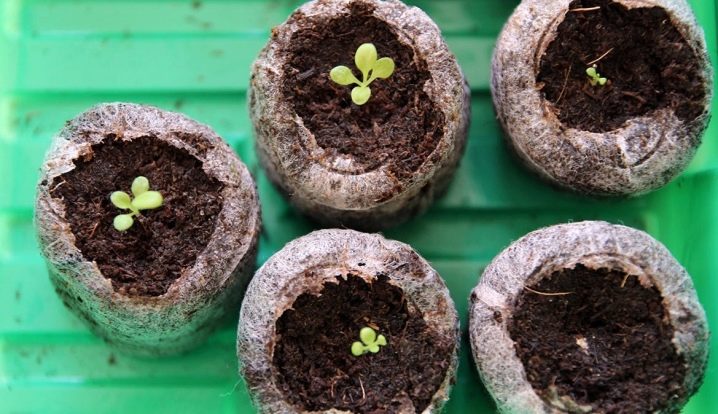
Observing the temperature conditions, the seeds sprout easily and beautiful flowers can be easily grown from them, the seedlings will not stretch, and the plant will be bushy in the future. If natural light is not enough, artificial lighting must be provided, and for this you can use a phytolamp or an ordinary incandescent lamp... Watering the seedlings is required often, but it is important to ensure that water does not linger in the container in order to prevent disease, rotting and death of the flower. As equipment for irrigation, you can use a pipette or an ordinary medical syringe without a needle.
At this stage, you need to feed pelargonium with a special fertilizer, which dissolves quickly.If you use conventional micronutrient fertilizers, you need to prepare a solution of the active substance with water at a concentration of 1: 2.
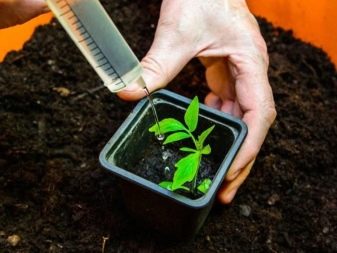
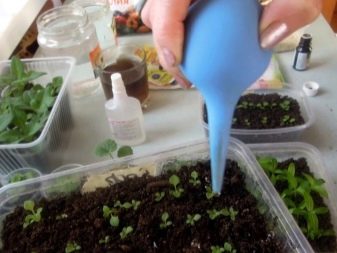
It is necessary to understand what this or that plant signal means. Here are some warning signs that anyone growing pelargonium needs to know.
- If the leaves turn very yellow or dry - this means that the plant lacks moisture. It is necessary to increase the amount of water when watering, and with a small pot, replace it with a larger one.
- Sluggish and too dull leaves, and gray rot appears on the stems - excess moisture.
- Leaves are falling in particular, the lower ones - due to lack of lighting.
- The plant has ceased to bloom - too large a pot or lack of dormancy in winter, lack of lighting, the plant is not pruned, low temperature or a large amount of fertilizer.

Like any other plant, geranium also has a number of diseases and is susceptible to pest attack, even if it is carefully looked after.
- Gray mold or rot - excess moisture. In this case, the leaves are affected. It is necessary to stop watering, and also remove those leaves that have suffered, and then spray the plant with an antifungal drug.
- Root rot - with excess moisture. It damages the root itself. After that, it is no longer possible to cure pelargonium.
- Powdery mildew - high humidity and low temperature. A fungal disease damages the leaves. After that, a white coating remains on them. For treatment, solutions are used with the addition of chemicals.
- Black leg - most often damages the cuttings, which is why, after the defeat, the decay process begins. Stop watering the plant and remove any damaged cuttings. For treatment, antifungal drugs are used, which need to pollinate geraniums.
- Aphids - can be seen on the inside of the leaves... For treatment, the injured leaves are sprayed with poison, guided by the instructions for the preparation (insecticide for indoor plants).
- Whitefly - like aphids, it can be seen on the leaves. The pest feeds on plant sap. It is required to remove all the leaves that have been affected by the insect, and also spray the pelargonium with poison.
- Spotting - with it, spots or bubbles appear on the underside of the leaf. It is required to remove all affected leaves and treat the plant with fungicides (chemicals against fungal diseases).
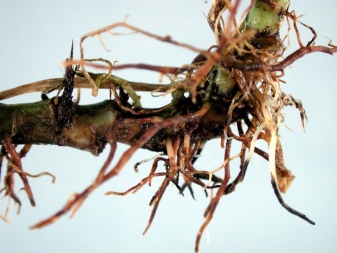
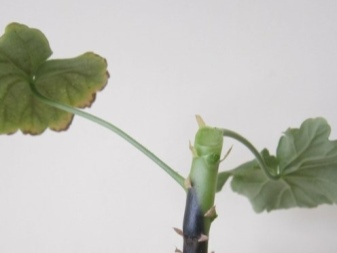
Transplanting seedlings
When several leaves appear on seedlings on geranium sprouts, it must be dived, that is, planted. The seedlings are transplanted into small pots. When picking, it would not hurt to use clay pots, as this is the most correct solution, because they retain moisture much longer and protect plant roots from overheating. When planting, it is advisable to make a long-term top dressing, and also do not forget to constantly loosen the soil. If the threat of frost is no longer foreshadowed, then geraniums can be planted outside.

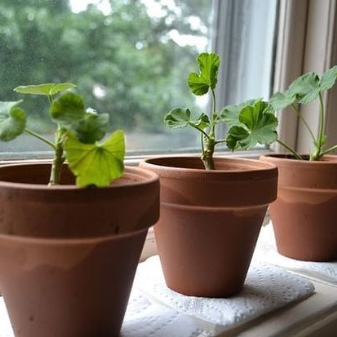
If geranium is found outside, if the air temperature reaches below + 10 ° C, it is necessary to cover it with a film or transfer it to the house. In hot weather, you need to water the geranium no more than once a day, and at medium temperatures, it needs to be watered once every couple of days. When watering, make sure that no water gets on the plant and its leaves. Geranium is afraid of drafts, therefore, it is undesirable to spray the flower with open doors, as it can freeze and die. Twice a month, you need to feed the soil with any flower fertilizer that can be found in flower shops.
Faded inflorescences will need to be removed, but only for those varieties of geraniums that need it and if this variety does not discard them itself. You need to pinch the flower so that its stem does not stretch up. This can help form a small crown. This should be done only when the plant has reached a height of 10-12 cm.
For the correct formation of the geranium bush, the pot is sometimes turned a few degrees so that light hits the plant from all directions.
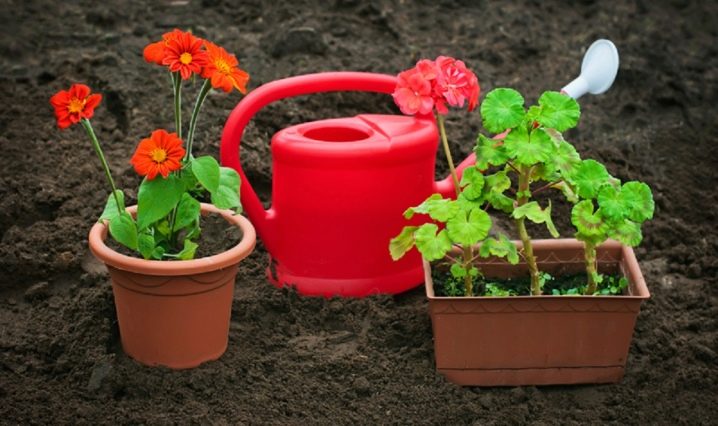
At the moment, geranium is in great demand, as it has a number of advantages. The light-loving plant will appeal to many, since it has a bright color, and its splendor has a competitive ability over other plants. The specific smell of pelargonium may not please everyone, but knowing its useful properties, many change their attitude towards this flower. Those rooms in which pelargonium is located are endowed with their own positive energy. In such rooms, flies, mosquitoes and plant pests are practically not found.
Geranium is easy to care for. She needs constant watering, but in the absence of it for no more than three weeks, it will still feel great. With such a long break, it is desirable that the plant is not on the window, but in a place with high humidity. This is necessary in order to exclude the risk of burning the plant by direct sunlight.
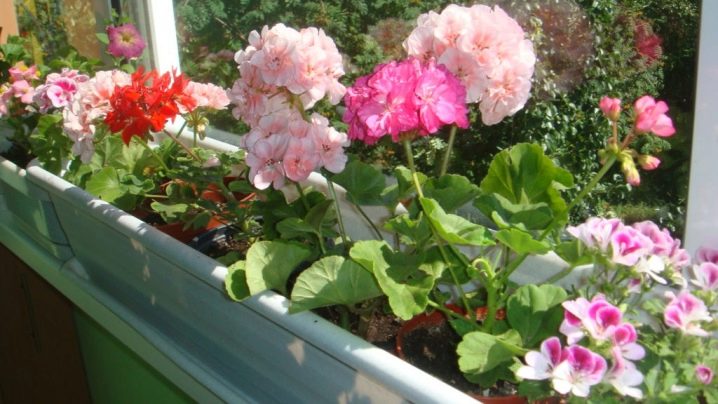
If you fulfill all the conditions for planting, growing and caring for pelargonium, you can observe the splendor and flowering of the plant all year round.
For information on how to grow geraniums from seeds, see the next video.







































































































The comment was sent successfully.